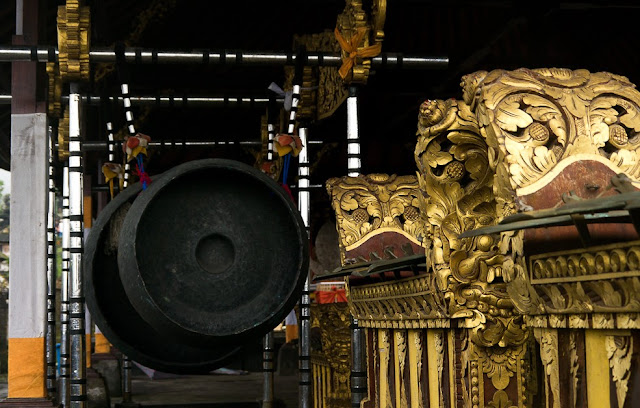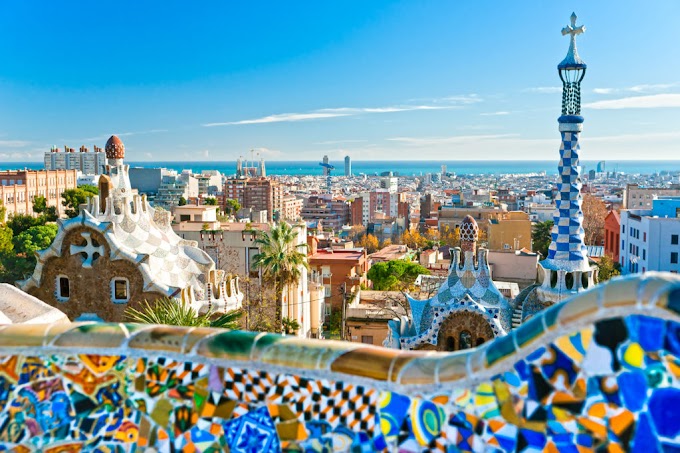
Pura Besakih is a whole complex of temples built on the slopes of the sacred Agung volcano. Once only rajas had the right to pray here, but now every Bali community strives to have its own sanctuary in Besakih...
Officially, Pura Besakih consists of 22 temples: three large and 19 smaller. In fact, the complex consists of a bunch of chapels, sanctuaries, temples and temples, which can only be understood by a local resident.
It is believed that the construction of the complex began in the XIV century, but some sanctuaries must have been here much earlier. The whole complex is dedicated to the Hindu "trinity" of Trimurti - Shiva, Vishnu and Brahma.
Despite his sacred status, Besakih was unable to escape the destructive forces of Balinese nature. In 1917, the temples were badly damaged during a powerful earthquake, and the eruption of the Bali volcanoes in 1963 only miraculously bypassed the Besakihs.
Lonely Planet and other guidebooks pay great attention to the industry that has developed around the Besakih of ripping off White Misters. However, those who have been to India can sleep peacefully: the tricks of the Balinese are a kindergarten in comparison with the Indians.
It all starts at the ticket office, where it turns out that the rental of the obligatory sarong is not included in the ticket price, as in all other temples, but is made for a separate fee. Long trousers also do not satisfy the local guardians of moral order, so after a short trade, we had to take sarongs for 5 thousand ($ 0.5) rupees each.
Further, the road to the temple goes through a line of motley traders offering boiled corn, herring, chips, water and a bald devil for change. Girls with "rental" umbrellas (and they were perhaps the most annoying) jump up right there - in bad weather their business is going well.
At the very beginning of the first staircase, there is a company of local "boys" who, without much enthusiasm, hang noodles for everyone passing by that they are special "temple guards" and without them, like the passage to the territory of the temples is prohibited. All this is naturally complete nonsense, the Balinese Hindus, unlike their Indian brothers in faith, do not suffer from religious chauvinism. Foreigners can freely enter the territory of the temples, being normally dressed and not interfering with the ceremonies. The passage to the "infidels" is closed only to the innermost sanctuaries.
In good weather, the "Supreme Mountain" Gunung-Agung acts as the backdrop for the entire complex of temples. But again we arrived in bad weather and Agung never showed up to us. However, we have already seen it in all its glory during a sighting trip to the Balinese volcanoes .
Here, instead of a gray haze, there should be a plush green volcano slope.

We give up and rent an umbrella - lucky again with the weather, so lucky.

Here, under this picturesque main staircase, hang around these same guards-guards, imposing their invaluable services on everyone they meet and cross.

Locals, of course, do not need any guides, except as a labor force to carry a healthy box of offerings.

Since they are not allowed to enter the main staircase, we go around it. Several paths go up the slope of the mountain, going around all the temples and intertwining into one labyrinth.

We look into the courtyard of one of the large temples. There they build some kind of ritual "houses for spirits" from bamboo.

Each Balinese temple consists of three courtyards-fences, built "one in the other." Walking around the territory of the temple is absolutely not forbidden, the main thing is not to interfere with the ceremony.

Here, under one of the canopies, the instruments of a gamelan, a traditional Indonesian orchestra, are kept. Its sounds accompany any religious ceremony or holiday in Bali.

Gamelan is based on percussion instruments: gongs, xylophones and drums. The second part is performed by something like a gusli and a flute.

We climb further, on the way from time to time looking back. The lower temples gradually disappear into the fog, and the upper ones - in low hanging clouds.
Along the road, people sell water, boiled corn and other simple snacks.

The corn is gone!

The temples of the complex smoothly flow into the usual village buildings. It is probably karmically very true to live in such a place =))

And we all continue to gradually creep into the cloud itself, looking into the courtyards of various temples along the way.

There life goes on as usual - parishioners pray, priests accept offerings.


And lured and arrogant spirits - these offerings are systematically destroyed.

From time to time, through the holes in the clouds, the sun still peeps out and the soaked thatched roofs get a chance to dry out a little all their age-old mold.



Finally, we climb to the very top, closest to the sacred peak. The local temple is completely bogged down in fog, the rain stops dripping from above and simply soaks through all the clothes. The stones of the temple also seem to be saturated with moisture.

All green vegetation grows and blooms on them.



The landscapes are absolutely Miyazakov's - all surfaces are covered with thick woolen lichen moss.

From the stairs of the temple you can look at the whole Besakih and the plain below.

Half, however, is again hidden in the cloud.


After being saturated with a cloud and freezing, we go down. Along the road are very dull, given the weather conditions, souvenir shops.

The gilded spiers of the pagodas hit the fog.


But as soon as you jump out of this fog, it turns out that the sun is shining below and the weather is generally quite pleasant.




On this, I ask you to consider a series of posts about beautiful Bali finished, next in turn is the continuation of the interrupted story about our self-propelled expedition to Myanmar.







